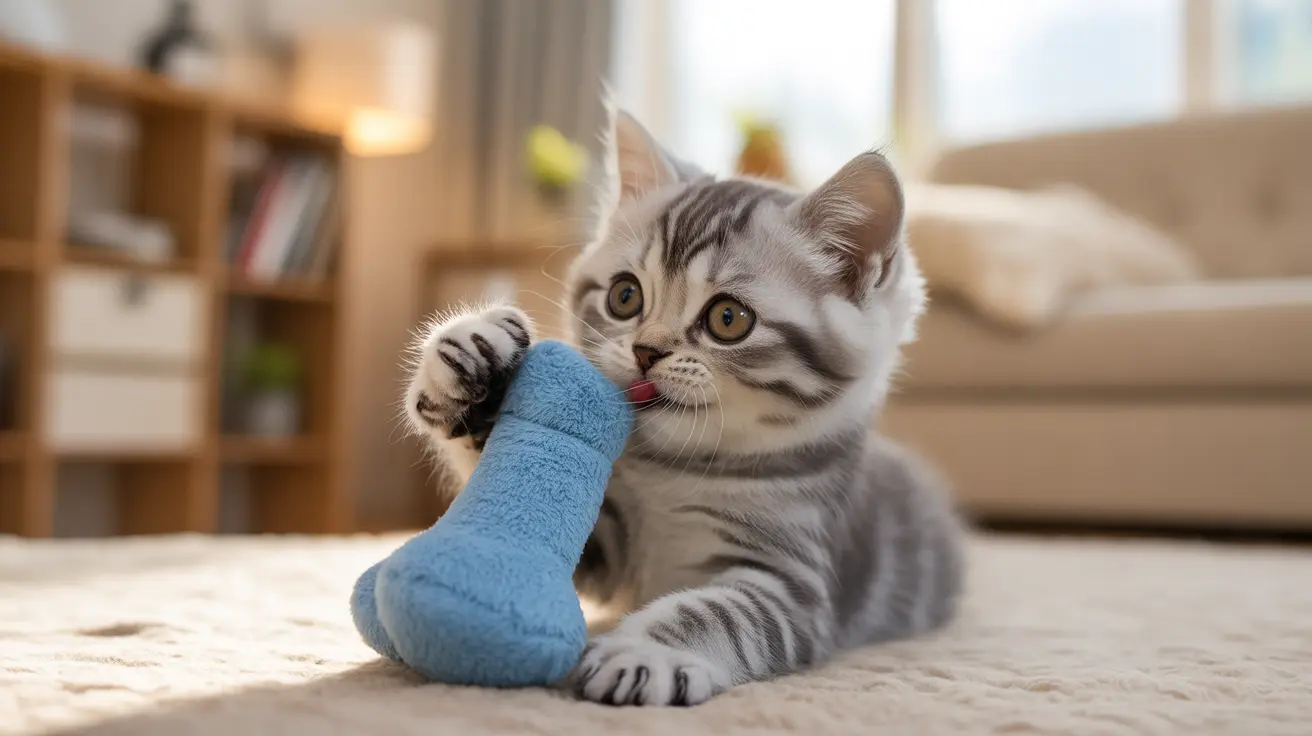Understanding Why Kittens Bite
Kittens bite for several natural reasons, including play, exploration, and teething. During their early developmental stages, biting helps them learn about their environment and develop crucial hunting skills. This behavior typically peaks between 3-6 months of age when they're also experiencing teething.
Understanding these underlying causes is crucial for addressing the behavior effectively:
- Play aggression and hunting instincts
- Teething discomfort
- Social learning and boundaries
- Overstimulation during interactions
- Stress or anxiety responses
- Communication attempts
Effective Training Techniques to Stop Biting
Redirect and Replace
When your kitten starts to bite, immediately redirect their attention to appropriate toys. This teaches them what they can and cannot bite while maintaining their natural play drive.
- Use interactive wand toys
- Provide designated kicker toys
- Offer soft chew toys during teething
- Never use hands as play objects
Positive Reinforcement
Reward gentle play and appropriate behavior with treats, praise, and attention. This positive association helps your kitten learn what behaviors earn rewards:
- Treat rewards for gentle play
- Immediate praise for using toys
- Consistent responses to good behavior
- Brief timeouts for biting (2-3 minutes maximum)
Managing Teething and Discomfort
Teething typically occurs between 3-6 months of age and can increase biting behavior. Help your kitten through this phase by:
- Providing frozen or chilled teething toys
- Offering soft, kitten-specific chew toys
- Maintaining regular veterinary check-ups
- Monitoring for signs of dental issues
Creating a Positive Environment
A well-enriched environment can significantly reduce problem biting:
- Set up multiple play stations
- Provide climbing opportunities
- Create quiet spaces for relaxation
- Establish consistent feeding schedules
- Use calming pheromone products when needed
Prevention Strategies
Preventing problematic biting is easier than correcting established behaviors:
- Supervise play sessions
- Recognize signs of overstimulation
- Maintain consistent boundaries
- Socialize early with other pets
- Provide adequate exercise opportunities
When to Seek Professional Help
Some situations warrant professional intervention:
- Persistent aggressive biting
- Sudden behavior changes
- Signs of fear or anxiety
- Medical concerns
- Difficulty with training progress
Frequently Asked Questions
How can I stop my kitten from biting during play without hurting our bond?
Use consistent, gentle redirection to appropriate toys and immediately stop play when biting occurs. Resume play once your kitten is calm, reinforcing that gentle behavior leads to continued interaction. This maintains your bond while teaching appropriate play.
What are the best toys to redirect a kitten's biting when they are teething?
Soft plush toys, rubber teething rings designed for kittens, and frozen cloth toys can provide relief. Look for toys specifically made for teething kittens and avoid anything too hard that could damage their teeth.
Why does my kitten bite suddenly after petting or during play, and how can I prevent it?
Sudden biting often indicates overstimulation. Learn to recognize your kitten's warning signs and stop petting before they become overwhelmed. Keep play sessions short and watch for tail twitching or skin rippling, which often precede biting.
How do I tell if my kitten's biting is caused by teething pain or aggression?
Teething-related biting is usually accompanied by excessive drooling, chewing on objects, and visible dental changes. Aggressive biting typically involves other body language signals like tail lashing, dilated pupils, and growling.
When should I seek veterinary help for a kitten that bites persistently or aggressively?
Seek veterinary assistance if your kitten's biting is accompanied by unusual aggression, appears painful, or doesn't improve with consistent training. Also consult a vet if there are sudden behavior changes or signs of illness.
Conclusion
Successfully stopping kitten biting requires patience, consistency, and understanding of your pet's natural behaviors. By implementing these training techniques and maintaining a positive environment, you can help your kitten develop into a well-behaved adult cat. Remember that every kitten is unique, so be prepared to adjust your approach based on your pet's individual needs and responses to training.






